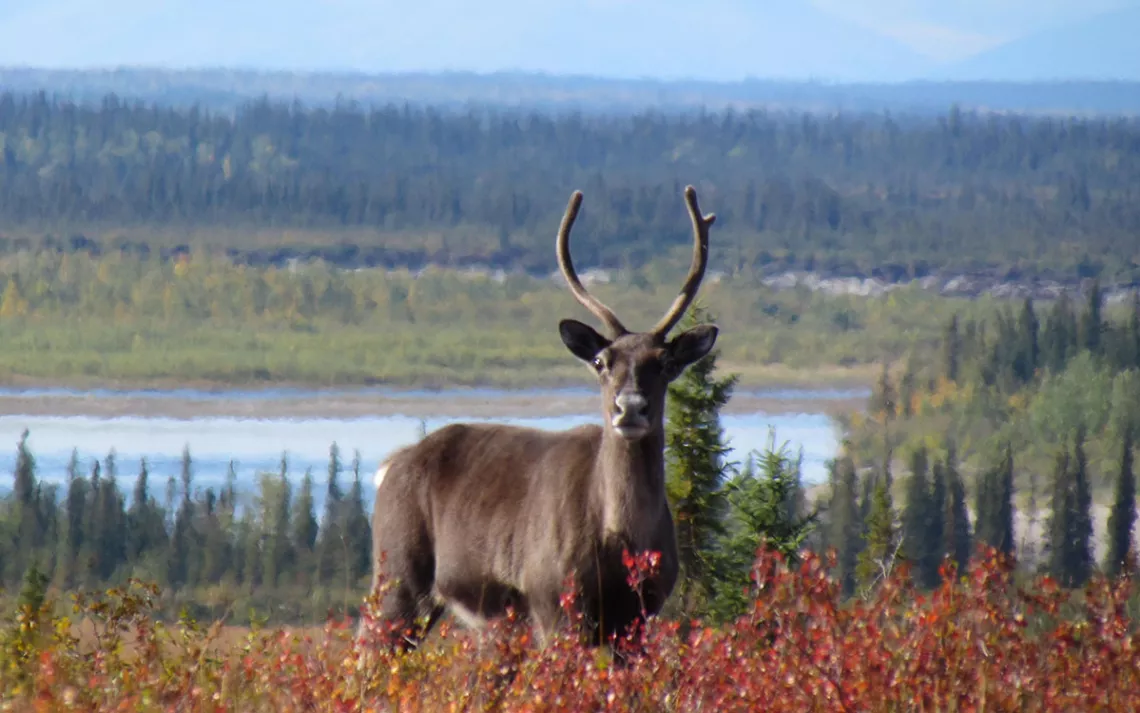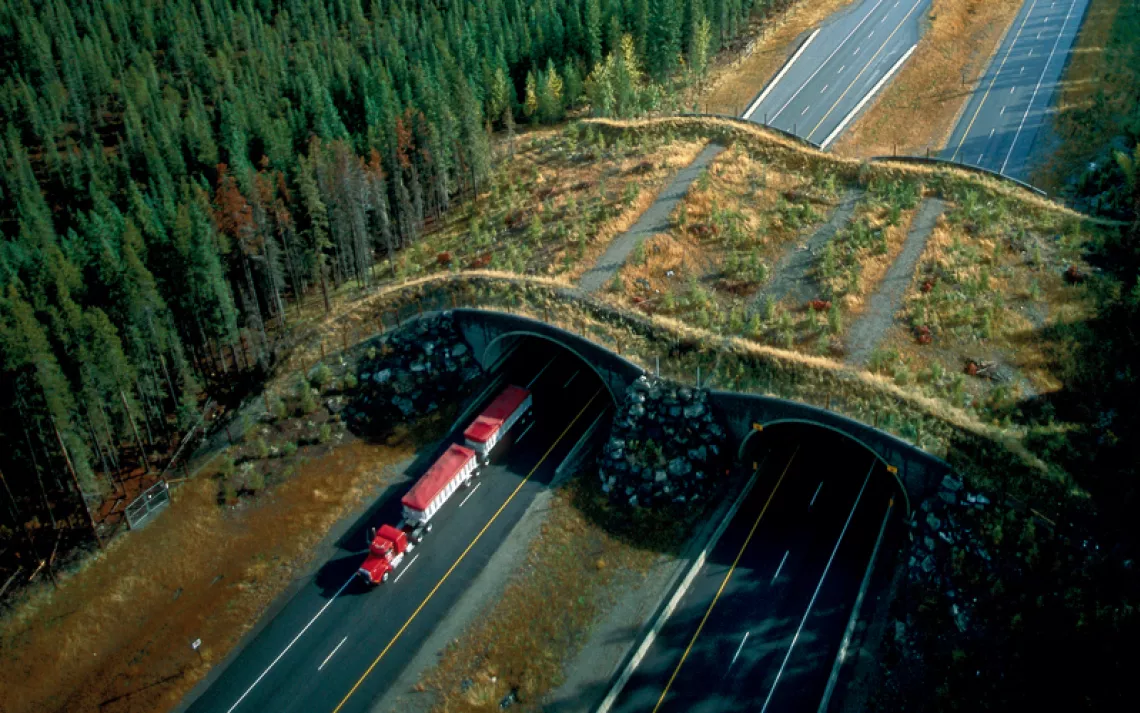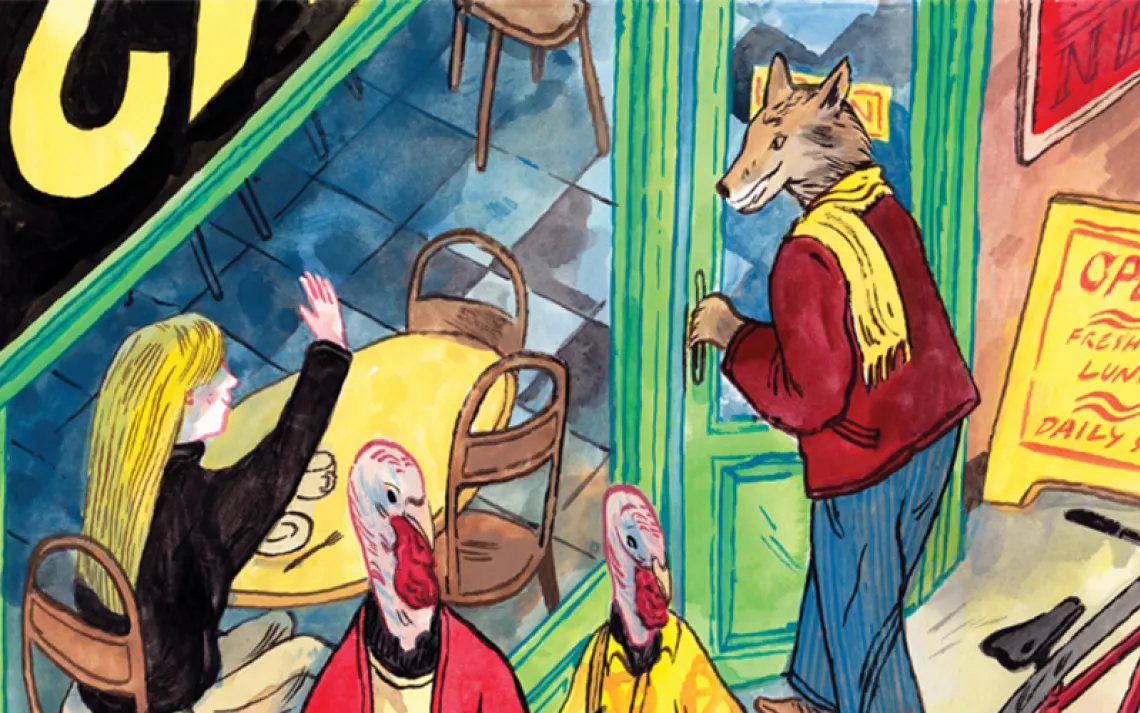One of the Largest Caribou Herds in Alaska Is Careening Toward Extinction
Here’s why experts say the current strategy to save them won’t work

A caribou waits to cross the river during the fall migration season. | Photo courtesy NPS
In the past three decades, the Mulchatna caribou herd of southwestern Alaska has gone from nearly 200,000 to 12,000. Last year, the state wildlife agency’s Board of Game started to explore ways to help the struggling population. It landed on a controversial solution called "intensive management," also called predator control, which directs wildlife officials to indiscriminately kill predators. It was the first time the state included bears in the hunt, a decision that had no public process and was conducted without bear population estimates.
Nearly every local environmental group and credible scientist opposed the plan. At one of the hearings, one state wildlife biologist even said that killing predators isn’t what’s needed to help this dwindling herd. According to Nicole Schmitt, the executive director of the Alaska Wildlife Alliance, it was the only time in recent memory that the Board of Game, which sets wildlife policy, went against the recommendation of state wildlife biologists.
The killing spree lasted 17 days, from May 10 to June 4. In the end, five black bears, five wolves, and 94 brown bears—nearly the entire estimated population for the area—were killed.
“The state has adopted this really archaic view of wildlife management with predators,” said Schmitt, whose organization opposed the cull. “It's totally misguided. I don't think anyone who looks at the research can conclude that [predator control] is going to benefit the Mulchatna herd in the long term.”
Alaska has used intensive management to suppress bear and wolf populations since the 1990s, when legislators mandated it to boost populations of moose, deer, and caribou, animals that the state would prefer people hunt. In 2011, the board authorized the first targeted wolf hunt to help the waning Mulchatna herd. However, the herd continued to decline, suddenly plummeting in 2017, leaving scientists, tribes, and conservation groups wondering why.
In 2020, a group of state biologists were commissioned to study the vanishing herd. They found that the most salient reasons for the decline are disease and poor body condition, which can be attributed to a lack of food. Brucellosis, a close relative of mad cow disease, is a naturally occurring disease that causes lameness, infertility, and lower birth rates. Caribou can withstand low infection levels, but wildlife officials found that over a third of the tested animals had brucellosis.
Wolves and bears prey on sick animals, playing a key role in keeping herds of caribou healthy. Without them, the hypothesis goes, brucellosis was able to infect more caribou, which could offer insight into why the number of sick animals coincidentally shot up following large-scale wolf hunting. By 2017, nearly 250 wolves had been killed, and the caribou herd tanked. The conclusion was clear: Fewer predators does not equal more caribou. “One mistaken belief regarding predation is that an individual killed by predators would still be alive if that predator had been removed,” said Nick Demma, a state wildlife biologist during a hearing on the research findings. “This overly simplistic view of predator-prey dynamics ignores the concepts of predisposition in compensatory mortality.”
The scientists also found that killing predators could contribute to a lack of food. Since wolves and bears can minimize prey populations to some degree, they prevent overpopulation and overbrowsing. “This is a scenario in which the reduction in the quantity and the quality of forage declines, often from overgrazing or even from trampling events,” said Renae Sattler, a wildlife biologist with the state, at the same hearing. “This can cascade into reducing body condition. It can impact pregnancy rates, increase susceptibility to disease, and decrease survival.”
So why kill wolves and bears if all these other factors seem more likely to be causing the decline in caribou? Because it’s an easy way to look proactive, said Schmitt. Local tribes rely on the caribou for food and sustenance. The state relies on hunting as a source of revenue. And the state requires predator control. So pretty much anyone interested in the herd agreed that something had to be done. In the case of the politically appointed Board of Game, targeting predators during the calving season was the most immediate answer, even if predation on calves is not the main reason for the herd’s decline.
“When you're telling the communities, ‘We're going to help you. We're going to do something,’ but then you do something that's not going to help them, it's just so disingenuous and such a useless use of resources,” said a former state biologist, who spoke on the condition of anonymity. “There's some things to do, but the solutions aren't shooting more predators.”
In an ideal world, the best solutions address the biggest problems. For the caribou, that could mean spending money on brucellosis vaccines and providing food. However, in its plan for the herd, the board doesn’t seem keen to do either. The predator control measures will continue until at least 2028, when the program is scheduled to end, the caribou population shows signs of increasing, or if the predator controls are ineffective. But that hasn’t always been the case. Even though these culls have already proved to be a poor way to boost caribou numbers, the board has renewed the current wolf hunt twice.
The next round of wolf and bear hunts is scheduled for spring 2024. According to Ryan Scott, the acting director for the Division of Wildlife for the Alaska Department of Fish and Game, agency staff, this fall, will count the number of calves that survive through the summer season to determine if the latest predator hunt was effective. But for conservationists like Schmitt, the department is already off to a bad start with its data collection efforts. At the very least, they should know how many bears and wolves live in the area and then look at predation rates. To date, that information has been missing.
“We're scapegoating bears … and … wolves because it's an easy way to show that you're doing something,” said Schmitt. “Is it sustainable management when you have to manage a herd by literally flying three aircraft and helicopters above the calving grounds and shooting things down? That's not management. That's humans playing God.”
 The Magazine of The Sierra Club
The Magazine of The Sierra Club






